There is a principle in nature and business that NOTHING HAPPENS by chance. Every step, even the smallest one, should be well thought out, planned and the result of solid data analysis. Despite this, competitive analysis is sometimes treated negligently, which can – let me say it loud and clear – only do more harm than good.
This is, of course, due to the (apparent) time savings. You won’t spend it on analysis, you’ll start acting right away, so you feel like you’re scoring extra points right from the start. Unfortunately, reality quickly verifies this approach. Remember, it’s better to slow down at the beginning so that by the finish line you not only have more strength, but also a more in-depth knowledge of your competitors’ patterns.
What is competitive analysis?
From the definition competitor analysis (eng. competitor analysis) is a process that involves gathering data about one’s competitors, analyzing it, and drawing conclusions to create the most effective strategy for marketing efforts on that basis.
As competition in the case of online marketing, you can consider other brands that operate in the same market, have very similar products on offer, run promotional campaigns and sales on the Internet.
When it comes to the internet and SEO, competition is not always obvious. It is sometimes the case that there are sites competing for keywords related to your business that you do not even know. Therefore, it is important to check the search results for your chosen keywords and identify your competitors.
This is where AW and the competition report comes to the rescue. In a simple and clear way, you will find out from it which sites have the most common words with your domain and with whom you are de facto fighting for the best possible visibility.
Competitive analysis should include such areas as:.
- business model,
- target group,
- offer type,
- marketing activities,
- sales strategies,
- communication plans,
- strengths and weaknesses.
The range, however, depends on the availability of particular data. Well – you won’t analyze something you don’t have a clue about.
This is probably obvious.
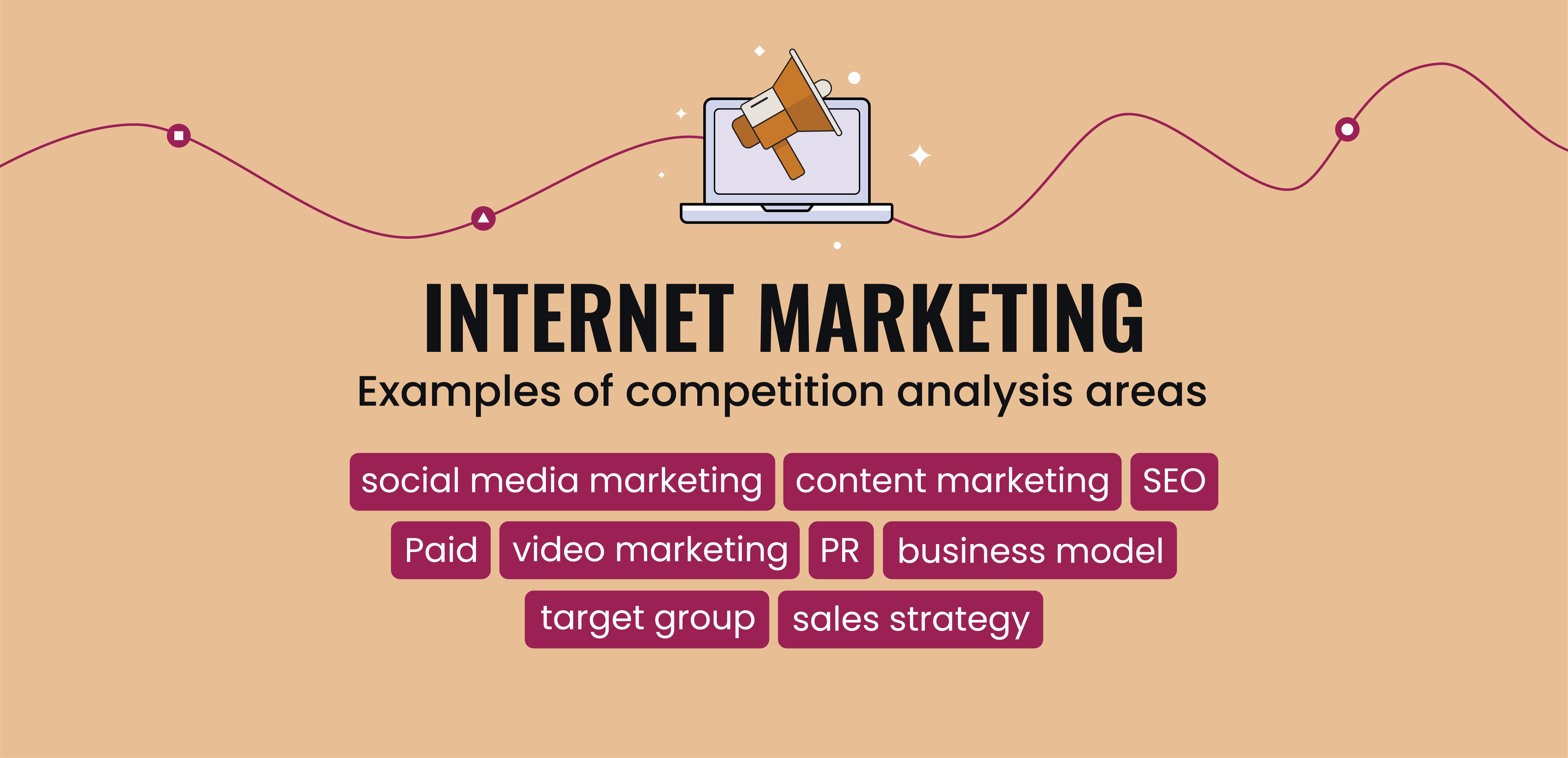
Why analyze the competition?
Some years ago, when I started working in Internet marketing, I was bouncing off a wall with the words carved into the wall: “Competitor analysis is not the most important thing. You can let it go.”
The market, however, has strongly verified this thinking. As you are probably well aware by now, there are far more arguments in favor of analyzing the actions of competitors than against. So, out of curiosity, I conducted a corridor test among my Senuto colleagues. I asked them why – in their opinion – to analyze the competition?
There were many differently constructed answers, but the sense of all of them boiled down to the fact that analyzing competitors’ activities:.
- stands as the foundation of all activities in today’s online marketing,
- facilitates noticing and naming advantages and gaps in your own business,
- translates into a better understanding of users’ needs and motivations,
- motivates users to think more creatively or go off the beaten path,
- enables you to estimate the costs and time needed to reach your next business milestones,
- helps you plan your SEO activities, lay out your strategy and find out what you can fight for.
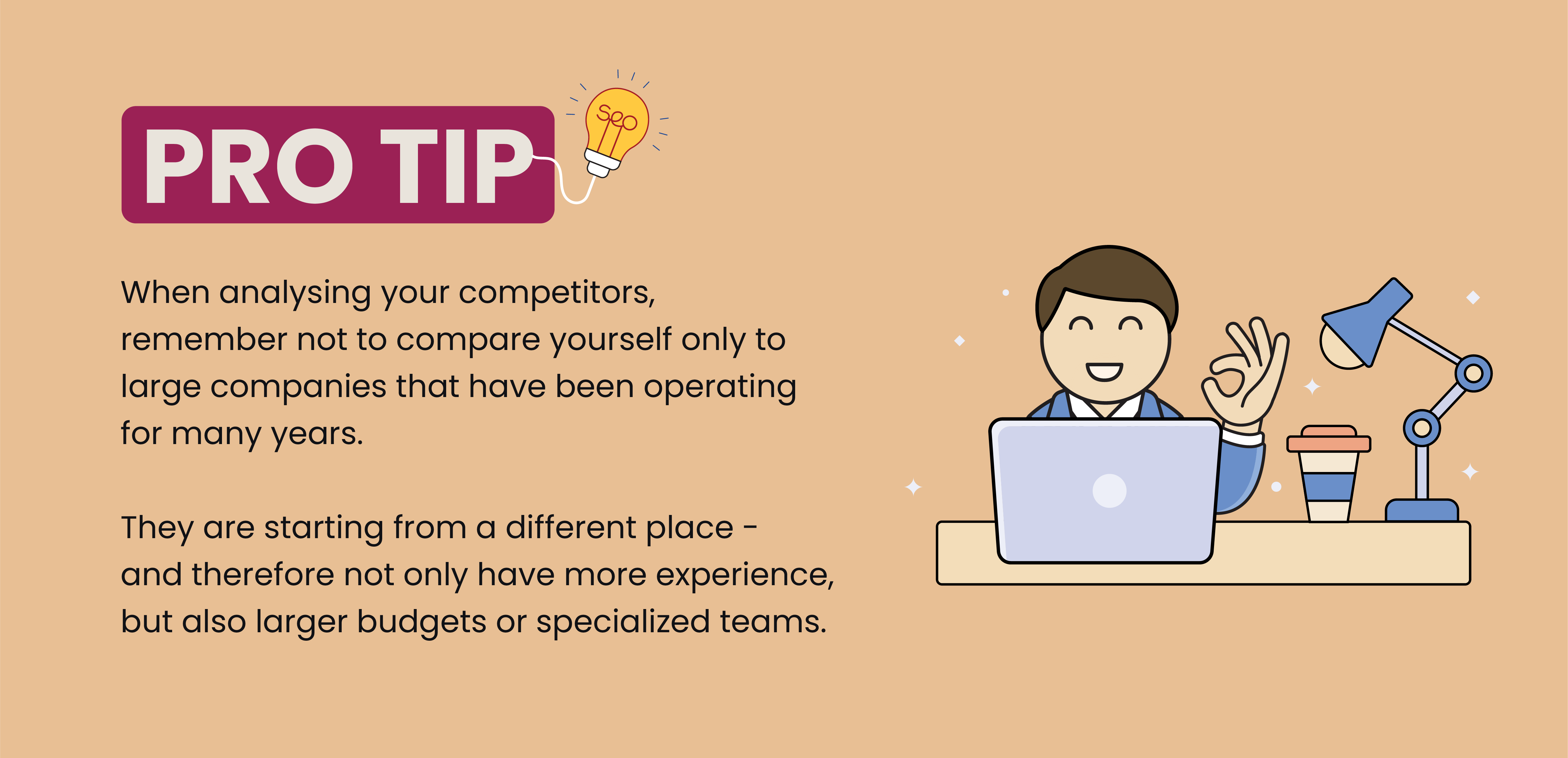
Why competitive analysis is important?
The primary reason for firstly analyzing the competition and secondly doing it regularly is that… you need to know the enemy. Because by doing so – it’s as simple as that – you act much more effectively and deliberately.
While working in marketing, I had the opportunity to prepare dozens, maybe even hundreds of marketing strategies for clients in various industries. Always one of the first elements of such a plan was an analysis of the competition: those close by (direct competitors), as well as those further away (indirect competitors or industry leaders). This allowed me to constantly build an up-to-date picture of the market and know what was happening in it. I am convinced that without the information obtained in this way, without knowing what the competition is doing, we are not able to make good decisions related to marketing activities..
The same is true in many other disciplines in our lives such as sports. If you know what lineup the opposing team’s coach will field during a given match, it’s easier for you to prepare a strategy for that match and prepare your players for possible situations.
However, this is not the only argument in favor of reliably analyzing the actions of the competition. It is important to remember that the customer, when making a purchase decision, very often compares you to other brands – checking whether your offer is the best, or whether he can find something more reliable. Only by being aware of what is happening on your competitor’s side can you better prepare your offer. This, in turn, has a chance to translate into a positive customer decision for you – says Michal Dmitrowicz, Head of Marketing at Senuto.
Benefits of competitive analysis. What benefits are associated with it?
There is a bit of a bad reputation behind competitive research, as it is often associated with copying solutions or lack of creative invention.
It’s time to dispel this myth!
Of course – analyzing the strategy and actions of competitors in the market is about peeking at what others are doing. The result of this investigation is not, or rather should not be, ideas transferred to your brand in 1:1 form. This would combine with a lot of trouble.
But if you treat analyses of this type as a source of knowledge as well as inspiration, a lot of interesting ideas can really pop up in your head. And this alone should be considered a huge benefit. And after all, it doesn’t end there!
Thanks to analyzing the competition before starting marketing or positioning activities:
- you learn from others’ mistakes,
- you save yourself a lot of stumbling blocks and implementing ineffective strategies,
- you will choose the direction of marketing and communications development,
- you will start to act based on reliable data,
- you will set specific, realistic, measurable and achievable goals,
- you more effectively define a timeline for subsequent advertising activities.
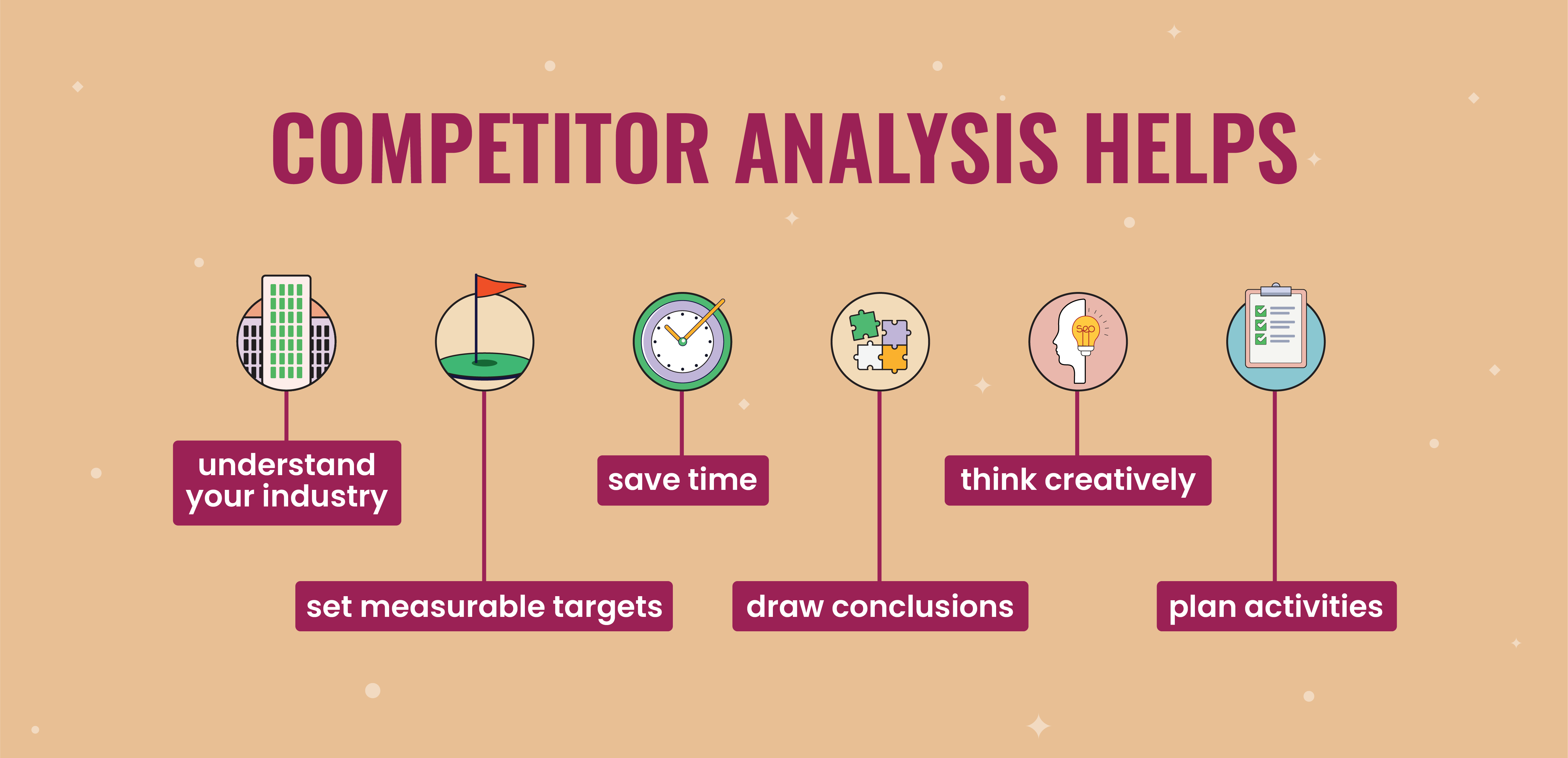
In summary – you analyze the competition to pick out the best moves and determine how you can incorporate them into yourbrand strategy, either yours or your customers’.
Disadvantages of competitive analysis
Good, good. It got too candy. It’s impossible…for competitive analysis to bring only benefits and feature only advantages.
This is not how the world works.
In this case, then, we can say right away that yes – competitive analysis also has weaker sides. The most important of these are:
- difficult accessor lack thereof to some data,
- need for regular updatesof the collected data,
- time-consuming execution (yes – competitive analysis saves you time in the future, but you have to allocate it first).
Should the above disadvantages stop you from developing competitive activity reports? Absolutely not! It’s just a signal to plan yourself time in your schedule for more analytical activities. To do this, you can use tools that give you an insight into your competitors’ strategy. One of these, for example, is Senuto.
Stages of competitive analysis
There’s no denying it – competitive analysis is a project of really considerable proportions. I remember when I did it for the first time… Well, okay, actually, I’d like to forget about it. To this day, I believe that I TOTALLY didn’t know what it would entail.
Hence also an important tip if you intend to do the analysis yourself: divide the work into stages and spread everything out over time.
Otherwise you may end up with… a failure of your own head system.
If, on the other hand, you plan to outsource your analysis to an agency or SEO specialist, it’s a good idea to divide it into stages as a basis for laying out the process of your cooperation. In this way:
- you will jointly estimate the scale of the venture (the larger the company, the greater the competitive analysis),
- estimate the cost of operations,
- estimate expected and achievable results.
Tools you need for competitive analysis
Today you can’t lay out an effective strategy without relying on data. And if you want to get it, you need specific tools to do it. Here are some suggestions from our specialists. These tools were by far the most common in the responses.
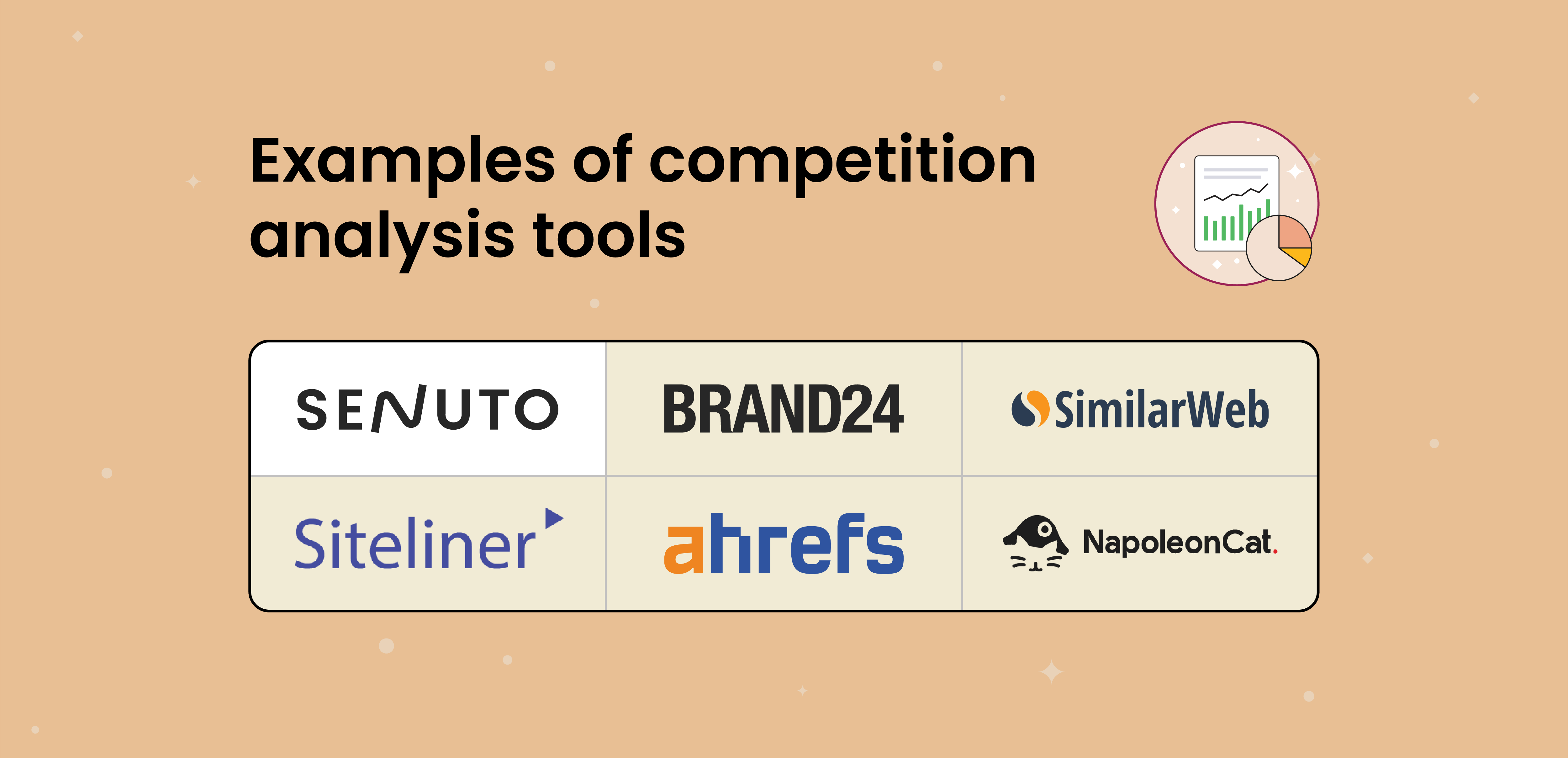
Competitive analysis tools:.
- Senuto – the tools and reports you’ll find in Senuto will help you expand your notion of competition, compare the results of your own SEO efforts to theirs, and plan your next steps in the race for the best possible positions.We also have traffic metrics. In Senuto, you get to know your competitors, so you know who to follow and check in further tools. On top of this, you can identify the keyword gap and determine the direction of your efforts. In addition, you can check the backlinks leading to your website.
- Brand24 – with this tool you can check how your competitors are visible online, not only in organic results. After all, online activities is a really capacious term. Thanks to the data pulled from the user panel, you’ll find out what the sentiment is towards your chosen brand, how often mentions of it appear online, and how big (or small) their reach is. What will this give you? First of all, the knowledge of whether your strategy should also include paid activities (such as sponsored articles) or PR.
- Ahrefs – use their tools to evaluate backlinks leading to your competitors’ sites. Once you define their profile, you will gain a very solid reference point to implement in your own strategy.
- SmililarWeb – here is another support for any marketer. Reach for it to estimate the amount of traffic or its sources from your competitors. You’ll also learn there which other brands’ ads are being displayed and where they appear, which – again – will come in handy when planning your own publications.
- Siteliner – this is a pretty simple way to evaluate competing sites from a technical point of view, such as detecting non-working links.
- Napoleon Cat – as you know, your competitors are not only waiting for an update, but also publishing content on social media. You should be there, too. And to do it head-on, it’s essential to check how your competitors are performing in this field. This tool will support you in this.
How to conduct a competitive analysis – 5 key steps
ETAP 1: Create a list of competitors
Depending on how big your business or client is, put 5 to 10 competitors on the list. It’s a good idea for them to be more than just your business rivals, that is, those offering similar products or services as you. Also rely on hints from tools such as Senuto. There, for example, in the Visibility Analysis module, you will find out which brands you are up against in Google search.
If you have the time, capacity and funds, you can include both solidly established brands and those just starting out on this list. This way you will look at the opportunities from a much broader perspective.
ETAP 2: Conduct market research
You can conduct market research in many different ways. But this step alone can really consume a lot of time and energy. To get the right information about the market situation, you need, among other things:
- analyse the search engine visibility of competitors’ websites,
- know current industry trends,
- conduct interviews with users.
Also ask yourself some important questions that will make market research bring you a range of relevant information.
ETAP 3: Compare products/services
For this purpose, you should create, for example, a table in excel and collect there all the most important information, for example, visibility for phrases related to products or services offered by competitors.
Revaluate products or services in terms of:.
- price,
- elements that make up the service/product,
- age of the target group,
- number of amenities/features,
- design,
- quality of workmanship,
- method of use,
- types of warranty,
- after-purchase support.
All data in one place rated by specific criteria – what more could you want!
Remember, too, that such document is worth updating at least once a quarter. The market is changing very fast and, needless to say, you need to keep up.
ETAP 4: Compare ways to communicate
When you already know what your competitors offer, it’s time to find out how they communicate it. This is a very important element from which you will make the foundation for preparing your own marketing strategy. And you probably already know that this is also an insanely complex process.
To evaluate your competitors’ communication methods, find out:.
- whether and how they maintain social media profiles,
- how they communicate products/promotions/special campaigns on their website,
- whether they maintain a blog and what content they publish there.
- what their paid advertising looks like,
- how they tell the story of their brand and products,
- what their search engine visibility looks like and what SEO actions they take,
- what language they use to reach their audience.
Many of the above elements will also answer your question about who the target audience of the brands in question is and, of course, where this group spends its time. If someone forgoes strictly PR activities, for example, but invests in a presence on TikTok, it sends a clear signal that their group is right there. And if your target looks similar, you probably also need to appear on this social platform.
I’ve noticed that quite often in competitive analysis, SEO topics are forgotten to be included. And yet it is a solid source of data. The number of both inbound and outbound links, the keywords the site is displaying for, and the derivative of all this, i.e. traffic estimation –the aforementioned data helps to assess the involvement of competitors in SEO activities, and thus perhaps diagnose an important niche in which we can stand out from others, says Łukasz Fedor, SEO & Paid Manager at Senuto.
Read also: Competitive marketing analysis from a content perspective.
ETAP 5: Perform a SWOT analysis of your business
When you’ve gathered all the information you need about your competition, the moment will come to evaluate your business based on it. It’s good to know what others are doing. However, you also need to know:
- how you compare to them,
- what are your advantages,
- where do you see your main opportunities,
- where you see your main threats,
- which trends you fit into and can use in your communications.
The SWOT analysis will support you in doing this step in the most structured way possible.
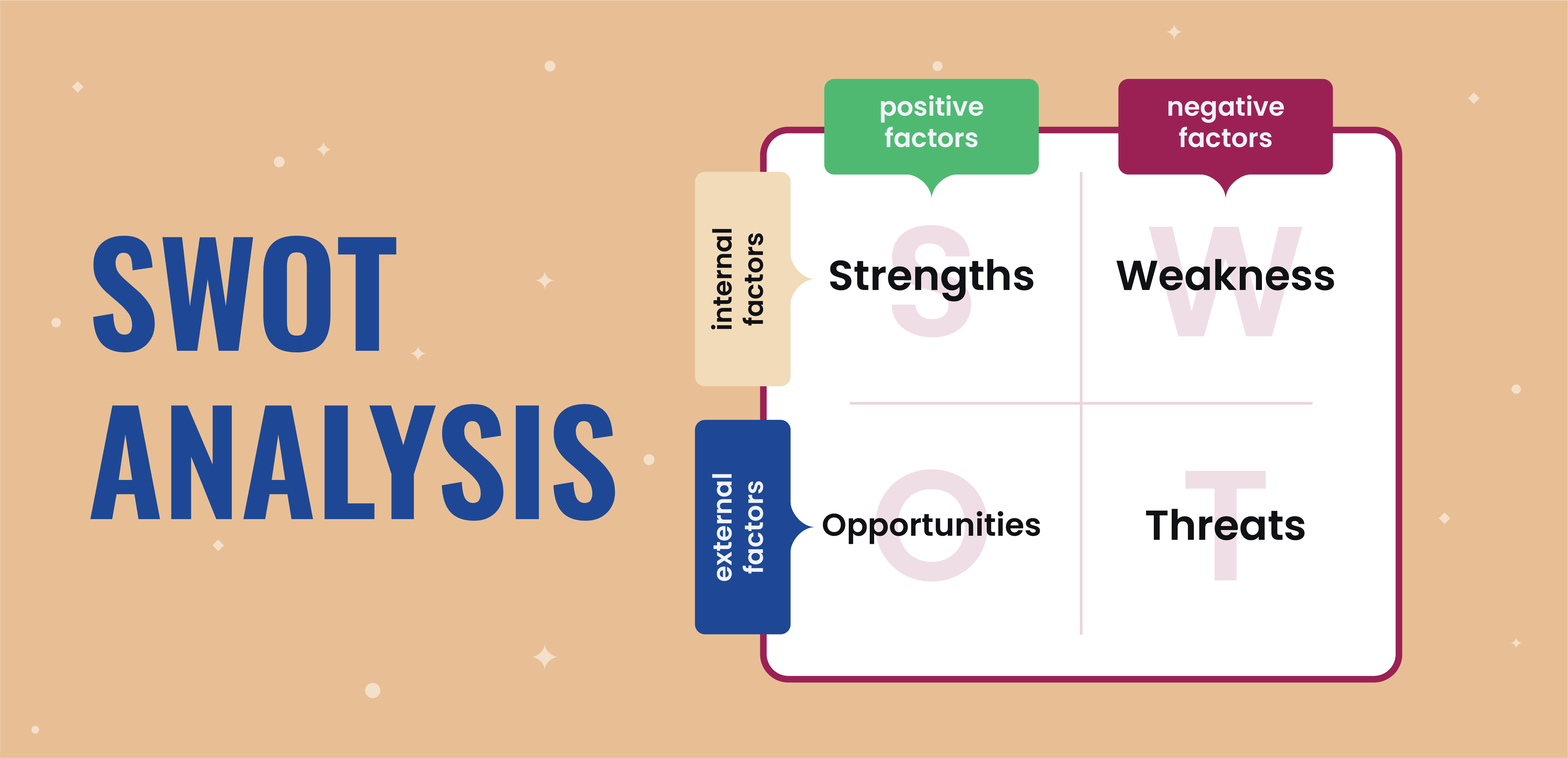
STEP 6: Perform SEO analysis
At this stage, it is also worth gathering information on the SEO activities of your competitors. To do this:
- track their search engine visibility,
- gather information on their SEO strategy,
- analyse their websites, product range and category breakdown.
And once you have gathered all the information – get inspired.
How to use the data obtained during a competitive analysis?
Keep your friends close and your enemies even closer. Trust is a good thing, but control is even better.
There are really quite a few such sayings, and I have to admit that they fit nicely with the theme of competitive analysis. After all, to build a long-term competitive advantage and be successful in the industry, you need to know your rivals really well.
Evaluate your strengths and weaknesses
I’m now going to write a thing that I’m sure you know, but is so important that it needs to resound here. ALWAYS DETERMINE YOUR POWER AND WEAKNESSES IN CONTEXT.There is no room for your “I think” or –what’s worse – “I want it to look like this, so this is how it is.”
For this purpose, you can also put yourself into the previously mentioned table with a comparison of products or communication methods. It could look like this, for example:
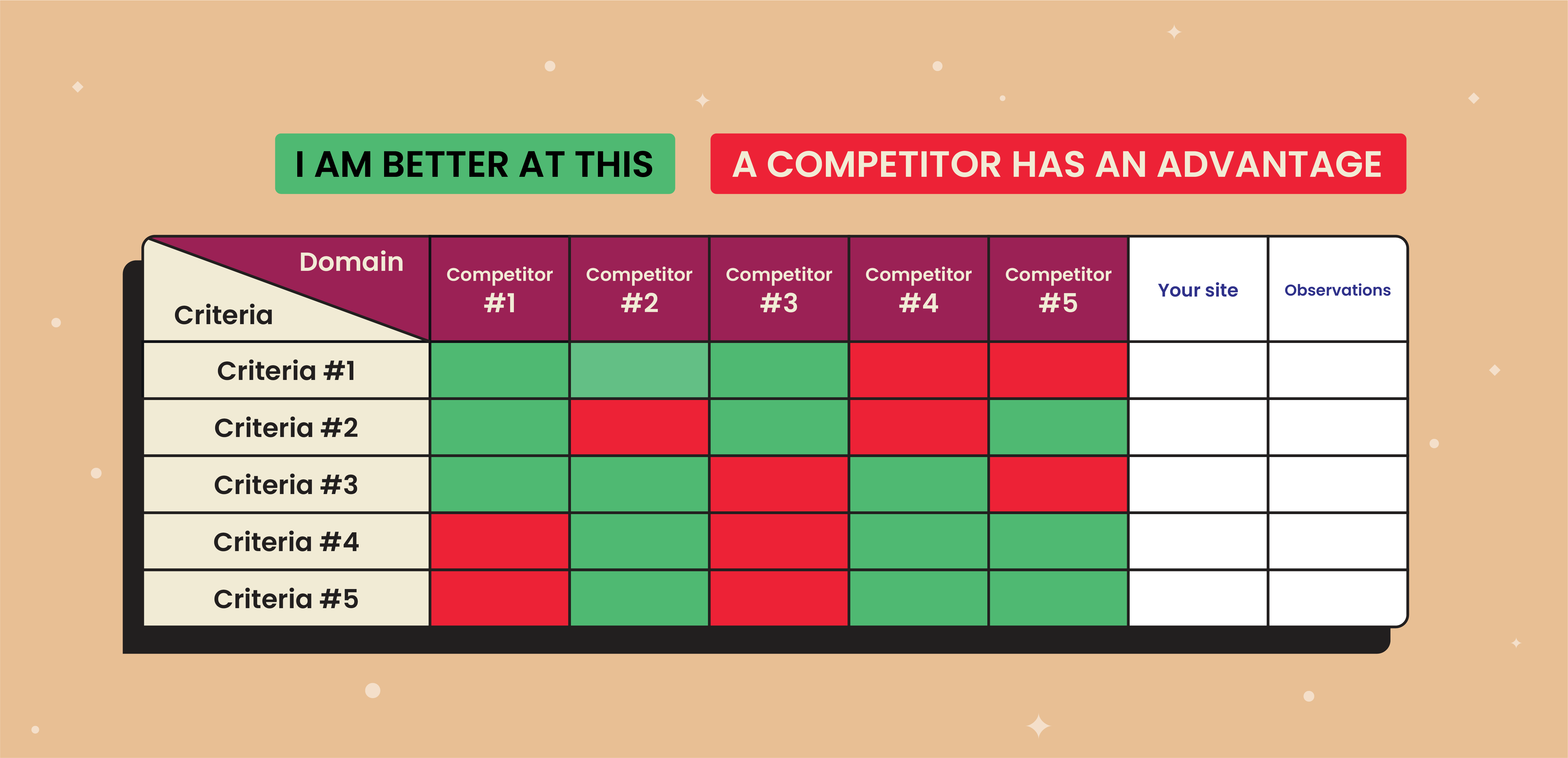
Visualization of data in such situations is crucial. It helps you very quickly see any dependencies, and thus –diagnose possible places to change.
If you want to quickly and effectively compare the visibility of several domains, then reach for the Competitor Analysis tool in the Visibility Analysis module in Senuto. This way you can see the words for which your competitors are visible and you are not. And if you select the right mode, you can also see which words are your advantage compared to your competitors.
Identify threats and opportunities for business
As I wrote a bit above –the collected data will be great for you to perform a SWOT analysis.
This method really has a lot of advantages, such as:
- helps you identify strengths and weaknesses, assess opportunities and name threats,
- assists in making informed business and strategic decisions,
- helps prioritize activities and improve overall performance,
- gives a clear message related to your company’s current situation.
But why are the boxes related to opportunities and threats particularly important? Well –they’re what define the elements of your business that you can start communicating right now, and with which you can go out into the world. At the same time, they draw your attention to what needs quick intervention because, for example, it blocks other activities.
Strategy for action – analyse, monitor and improve
I’m not going to beat around the bush. Analyzing activities, results or competition is endless fun. You barely finish one cycle, and already you have to start a new one.
In such repetitive tasks, it’s easy to fall into a pattern and repetition. You can also get caught up in the so-called confirmation effect, that is, sometimes not even fully conscious desire to interpret different information in a particular way, which clouds the picture and can end up… making wrong inferences. Avoid assuming things based on hunches or intuition. Base your conclusions on concrete data. They don’t lie.
For SEO, also regularly check the overall visibility of your domain and your competitors in Visibility Analytics to stay up to date. This way you always know if the numbers are rising or falling. If you decide to carry out SEO activities, use Monitoring and keep an eye on the progress of your efforts.
Tailor your offerings to the needs of your customers
I’d also like to point out, if that didn’t sound clear enough, that competitor analysis is not art for art’s sake. It’s data and information that you can confidently translate into new strategies, new actions or optimization of what exists.
It is possible, for example, to plan short- and long-term goals related to product offerings and changes to them. Include in your plans things resulting from the analysis.If you see in black and white that in a particular aspect all competitors are better than you – you need to quickly point this out and quickly redirect some of your capacity there.
Using competitive intelligence to build a competitive advantage
In my experience, not every entrepreneur remembers that they have competitors. I remember how during the presentation of one of the prepared strategies, the client was surprised because he was convinced that he had only one competitor in the market (in the briefing he indicated only the industry leader). According to our research – he had four more. Fortunately, the product he offered was a good one, which also came out from the competitive research, so we were able to build communications and marketing based on his obvious competitive advantage – said Michal Dmitrowicz.
When you know who your competitor is and how they operate, you can boldly turn their weaknesses into your own market advantages.After all, in love and marketing all tricks are allowed. Of course, I don’t mean denigrating competitors. Only giants like Coca-cola and Pepsi or Burger King and McDonalds can afford to have open wars without any consequences. 😉
If, however, in the course of your research, you notice that a competitor has problems with on-time delivery (since most Google reviews point this out), you can start including messages at your place related to how timely you are. If you find elements in the way you present your offer at your competitor’s that are not present at yours, think about how you can do them better.
And if your competitors are visible on some phrases, try working on the ones they are missing. Or, operating on their current visibility, find the words on which she is in positions outside the top10 and try to overtake them.
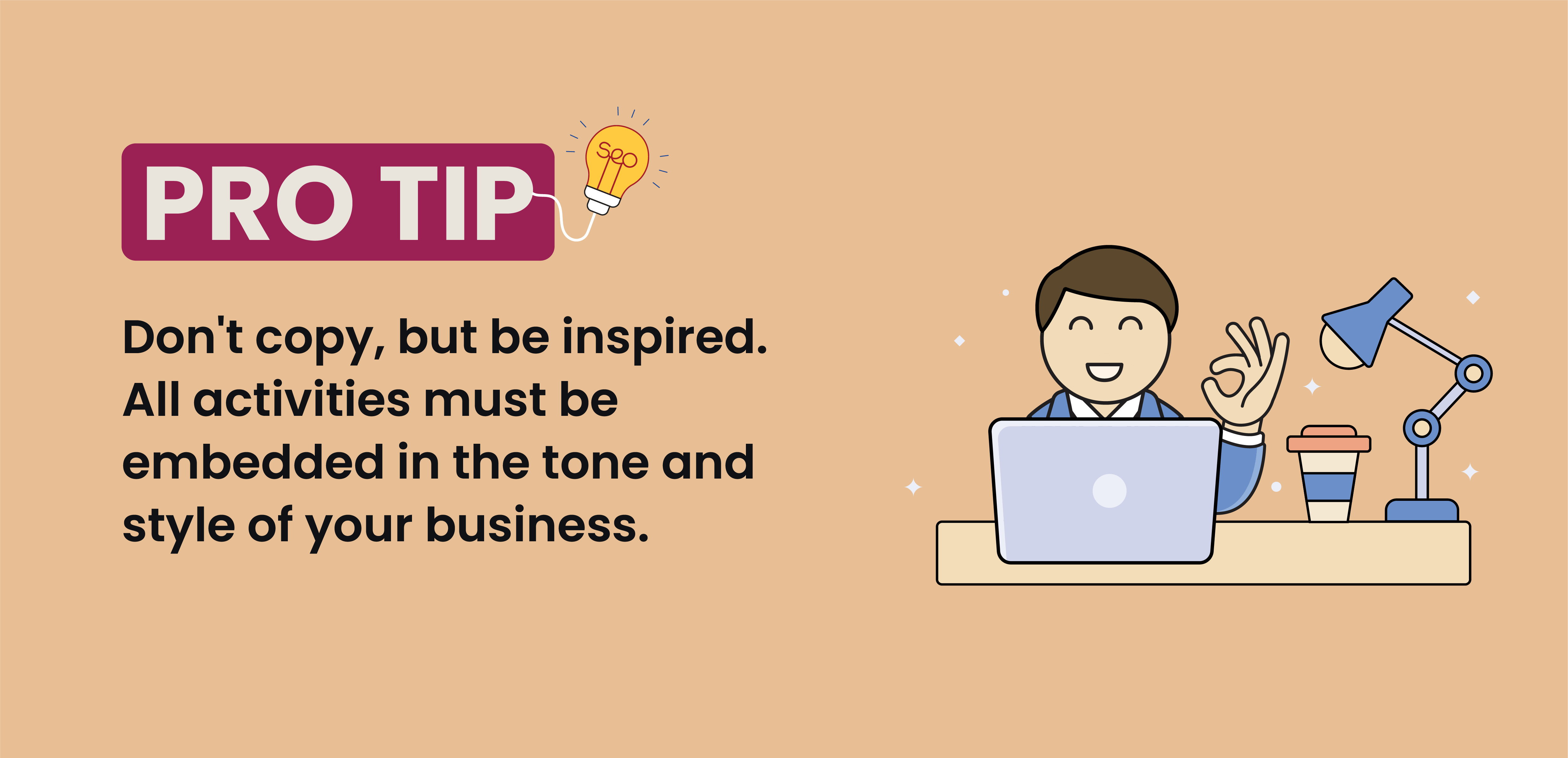
Summary
Competitive analysis in SEO – what does it give us?
A competitive analysis in SEO is an important point. It will help you gain awareness of what your rivals are doing in terms of SEO. In Senuto, for example, you can compare your domain with that of your competitors and assess what phrases they are positioning for and you are not.This is an easy way to lay out your content strategy and complete the content gap on your blog. Also important in SEO competitive analysis is the evaluation of links pointing to the web of rivals. This will show you the scale of your link building efforts and enable you to set your own goals on the subject and arrange your SEO strategy, among other things.
How to check the competition?
Competition you can check in several ways. First, list brands that offer exactly the same products or services as you do. Let’s assume you run an online shoe store. So your competition will include sites such as eobuwie, Zalando, Mr. Pablo and online stores of each brand, such as Adidas or Venezi.
But that’s not all.
These services are your business competitors – they offer the same products as you, reach the same customers. At the same time, there may be services that may not sell shoes, but write about them. And as a result, they position themselves on key phrases important to you. You can identify such rivals by typing a specific phrase into Google, or check it with one tool in our Visibility Analysis module.
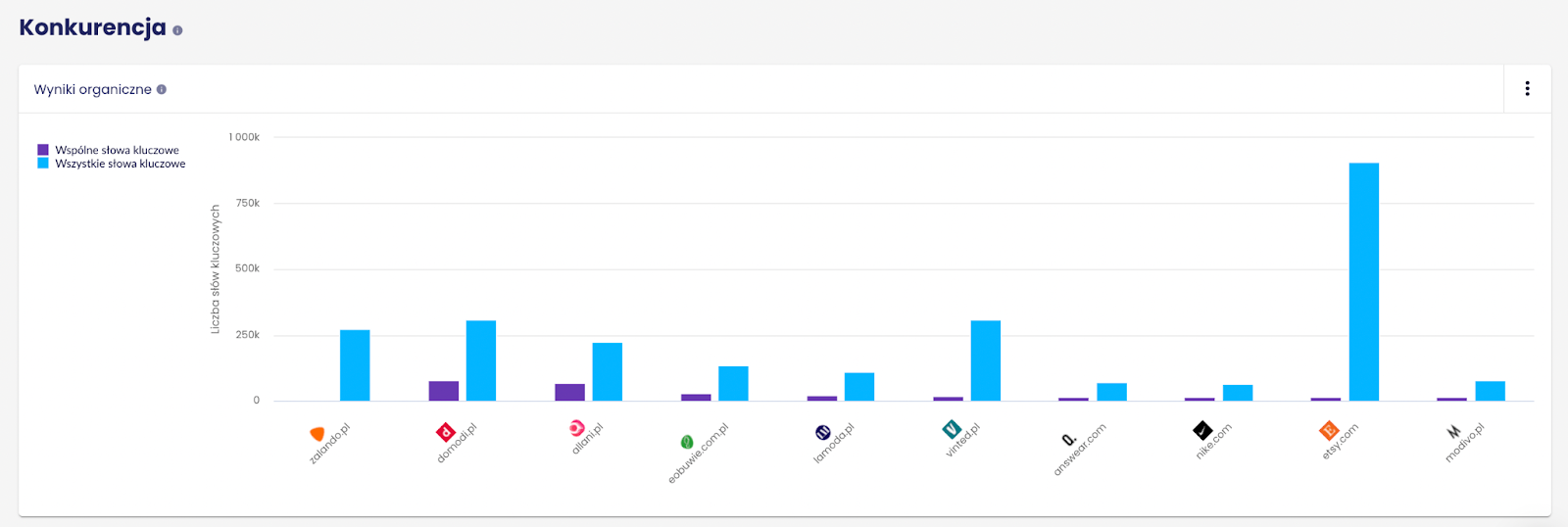
Why analyze the competition?
A well-conducted competitive analysis is one of your main tools to help you plan your strategy and build your own market advantage.
If you regularly look at your competitors’ actions, you can identify their mistakes or actions that have not been very successful. As a result, you get to know a similar target audience better and learn from others’ mistakes.
Other benefits of competitive analysis include the ability to make important business decisions based on data rather than intuition. For this one can be deceptive.
Additionally, thanks to competitive analysis, you can set specific goals for yourself, target your actions or verify your strategies, such as marketing or pricing.
How to study the competitiveness of a company?
From a business perspective, you measure a company’s competitiveness based on its reputation, financial performance, market position and recognition.
However, these are not all the indicators by which you can assess this aspect. If you need a broad insight into the position of your brandy, it is a good idea to prepare not only a list of competitors (e.g., based on tools/offers), but also to take a close look at their activities, for example, in:
- content marketing,
- building an offer,
- SEO,
- aspect PR,
- social media.
Then collect all the data in the form of a clear table and evaluate where your advantages are and where you still have a lot of work to do. On this basis, the action strategy prepares almost on its own!
 Iza Sykut
Iza Sykut